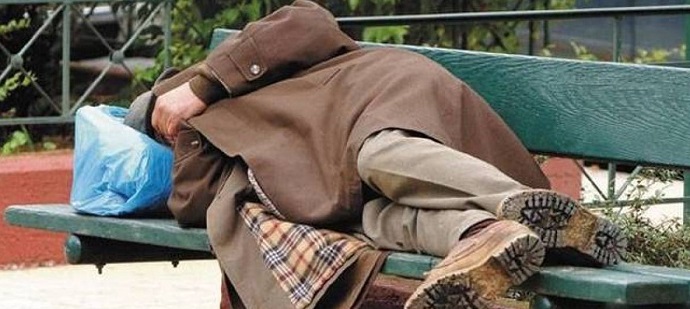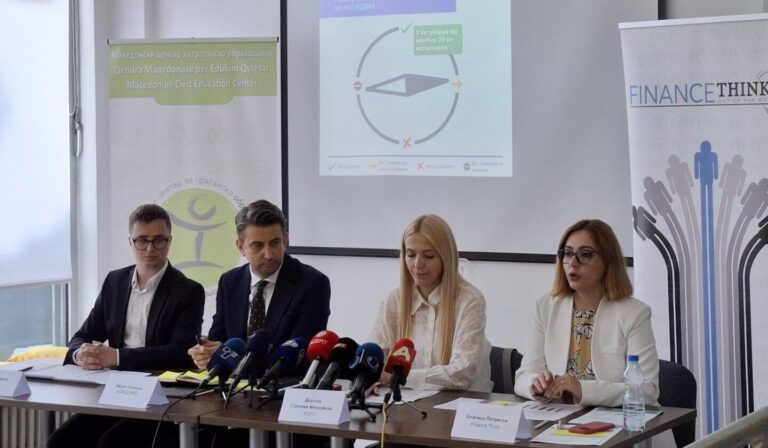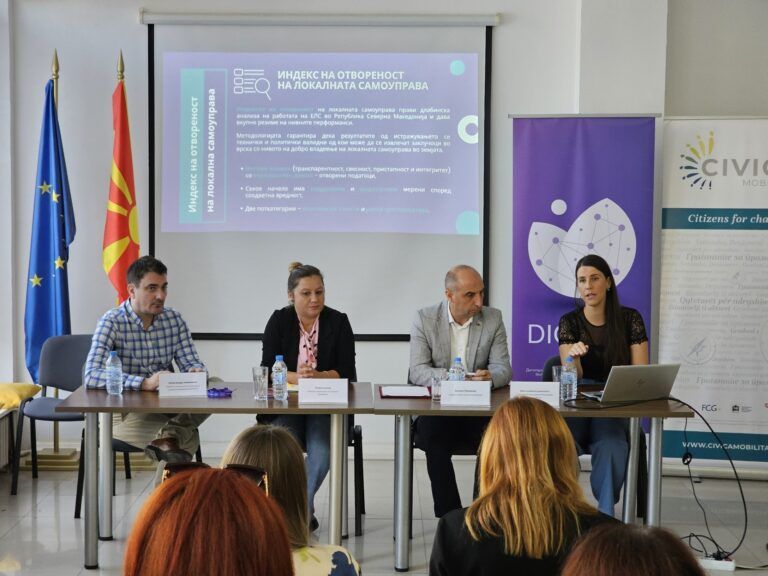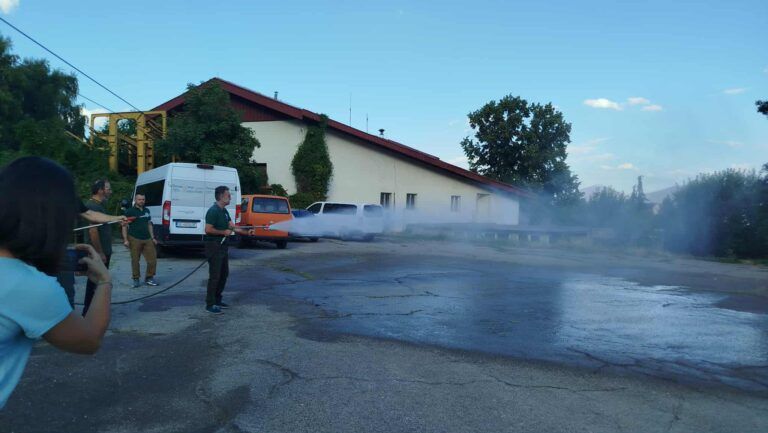REJECTED IN LIFE, REJECTED AFTER IT (III)
Authors: Sandra Nikchevska, Iva Andreevska, Monika Sebik
Skopje’s homeless end up at the Butel City Cemetery. They leave this world alone, just as they lived their lives.
Milan Ivanovski, a legal affairs officer at the municipal funeral services enterprise, says that the procedure for burying a homeless person is initiated and carried out by the manager of the city cemetery.
“The burial of a homeless person is carried out in a separate section of the cemetery without religious rites or special procedures. The costs incurred for the burial of homeless persons are covered by the Manager of the city cemetery. The Manager keeps records of homeless burials in a register with all necessary data on the deceased.”
MANY REASONS LEAD THEM TO THE STREETS
Street dwellers end up homeless for various reasons: some because of family conflicts, others because they were deceived or lost everything through gambling.
Still others due to addictions—alcohol, drugs. Some fall into homelessness because of depression from losing a job, divorce, or trauma.
There are countless examples—both in small, poorer countries like Macedonia and Serbia, and in larger, richer ones like Sweden and the USA. Everywhere, they remain unprotected and exposed to torture, harassment, and murder.
“Abroad, there are shelters and always some program for housing and protecting homeless people, aimed at removing them from the street. This is a completely different approach and level of sensitivity. They also have psychological and psychiatric support. A large portion of the homeless, as you know, have psychiatric conditions. This is completely absent here. We lack an entire program for how the state should deal with these people,” says Uranija Pirovska of the Helsinki Committee.
SKUP SURVEY: 20% OF RESPONDENTS HAVE WITNESSED ABUSE OF THE HOMELESS
Over 20% of citizens have witnessed violence against homeless people, according to an online survey conducted by the SKUP journalism team in Skopje.
According to their testimonies, the perpetrators are often young people, but also employees of municipal companies, public transport inspectors, or police officers.
All respondents said they had encountered a homeless person; 59% said “often,” and 17% said “constantly.”
Notable comments include:
- “I witnessed psychological abuse—the homeless person was insulted and spat on.”
- “A homeless person was beaten in the middle of the street by a group of teenagers.”
- “I wasn’t close enough to intervene, but a group of youths mocked and physically abused him.”
About 65% believe that homeless people can do almost nothing to seek justice before institutions. Comments include:
- “They have no hope for such a thing; nobody believes in Macedonia as a rule-of-law state, especially for the powerless.”
- “Nobody would even pay attention to such people; it’s questionable whether they would even be allowed into an institution to report violence.”
- “They can’t, because institutions are part of the attackers.”
- “They can’t because no one takes responsibility to help them; there are no state bodies to assist them.”
When asked what the state could do to protect this marginalized group, proposals included:
- Create registries for tracking them
- Open more shelters and kitchens that are open year-round
- Provide regular legal and financial assistance
- Plan ongoing programs for their protection and employment
ONLY ONE PLACE FOR HOUSING THE HOMELESS
Dragana Lazarevska of the Red Cross of Macedonia is the coordinator of the Homeless Shelter in Momin Potok. She says it is the only such shelter they run.
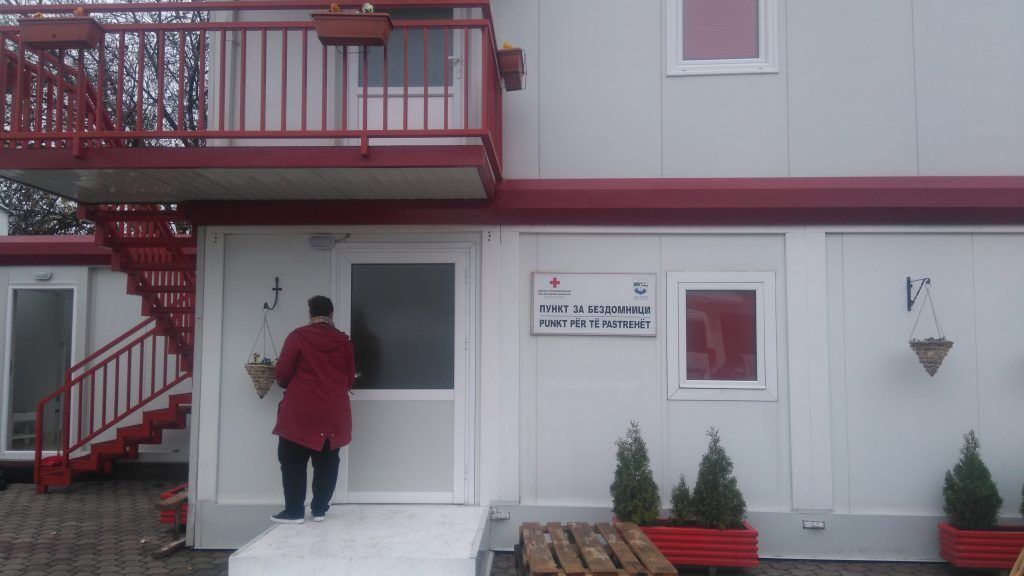
From the government sector, there is “Chichino Selo,” also a shelter for homeless people.
“It is the only state-funded and operated place for housing the homeless. In the past, around 2009, there was one in Katlanovo and later in Ljubanci, where there was a boarding facility for those without housing, but both have since closed. I don’t know the exact reasons,” she says. “Since we opened in 2008 until now, we have registered 250 homeless people. Even if they stayed just once, we have them in the register. Of these, 50 are regular visitors to the shelter. They are mostly people with many vices—we see everything: drugs, alcohol, gambling. Often they are people who extort money. Many have come out of prison. We rarely have families; usually they are individuals. It’s not that they have no families, but that everyone has given up on them; they are usually single and literally abandoned at the bottom of society.”
Lazarevska notes that the shelter is open daily from 9 AM to 4 PM, and last winter—from mid-December to mid-March—it operated 24/7 due to low temperatures.
“So far, about 80% have personal documents. Besides ID cards, two or three years ago we introduced identification cards for the homeless that we issue ourselves, so if someone loses their ID, they have another document for personal identification.”
MEDIA FULL OF REPORTS ON VIOLENCE AGAINST THE HOMELESS
Shockingly, in most cases of violence against the homeless, four out of six perpetrators are minors.
Serbia – In this neighboring country, the homeless are typically men over 50 with low education, unemployed or in poorly paid and unstable jobs, and often dependent on alcohol, drugs, or gambling. The streets of the capital Belgrade are home to 7,200 people, and Serbia overall has over 18,500 homeless citizens. Many live in sheds, basements, trailers, train cars, streets, and parks.
In Zemun, two boys—one a minor—tortured and then set fire to homeless man Milivoje P. With severe burns covering about 70% of his body, he was transported to the Military Medical Academy Hospital in Belgrade, according to Politika.
Brutal violence by minors against a homeless person was also recorded in Belgrade. An eyewitness said:
“I was stunned to see the youths kicking and abusing him. They scattered the cardboard he was lying on and continued to beat him.”
The attackers were brought before a juvenile prosecutor and investigated for causing grievous bodily harm, reports Alo.
3.3 MILLION HOMELESS REGISTERED IN EU COUNTRIES
Germany – A court convicted six Syrian and Libyan refugees for an attack on a homeless man sleeping at a Berlin train station last Christmas, reports Voice of America. CCTV footage showed the 37-year-old Polish victim sleeping on a bench, covered with newspapers. The main accused set the newspapers on fire before the group fled, laughing.
Sweden – This Nordic country has 34,000 registered homeless people. Activists say they are often targets of brutal attacks by those “who don’t want to see homeless people on Swedish streets.” Asim Besiragić, originally from Bosnia and Herzegovina, a well-known beggar in Malmö (where 1,000 homeless are recorded), was beaten to death in front of a school. Protests followed, with Swedes demanding greater state protection for homeless people.
NO DIFFERENCE AT THE GLOBAL LEVEL
Japan – Official statistics list about 7,800 homeless people, with 5,500 in Tokyo alone (a city of 36 million). Causes include job loss, bankruptcy trauma, mental health problems, and gambling.
Russia – Over 10,000 people live on Moscow’s streets. Days, especially winter nights, are particularly harsh. There are shelters, but capacity is insufficient.
USA – In New York City alone, 46,000 people are homeless. Many NGOs, funded by the state and private donors, operate soup kitchens. Last year, the state allocated $75 billion for “food stamp” programs enabling homeless and low-income people to get hot meals for themselves and their families.


